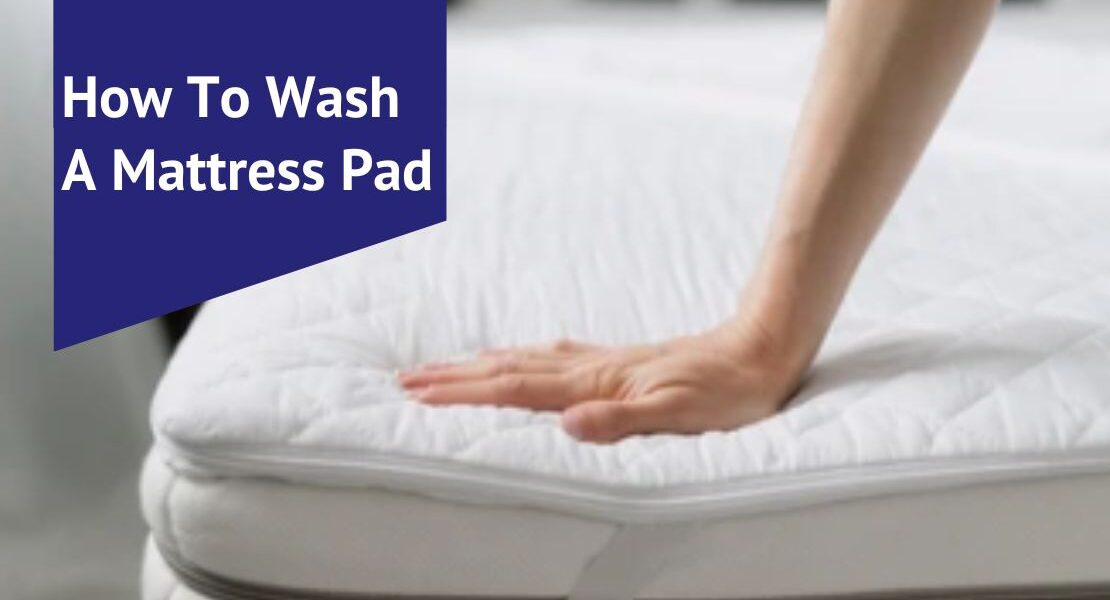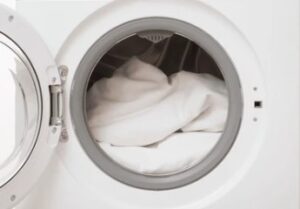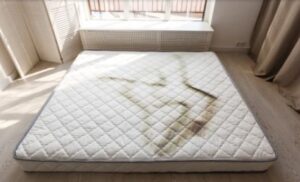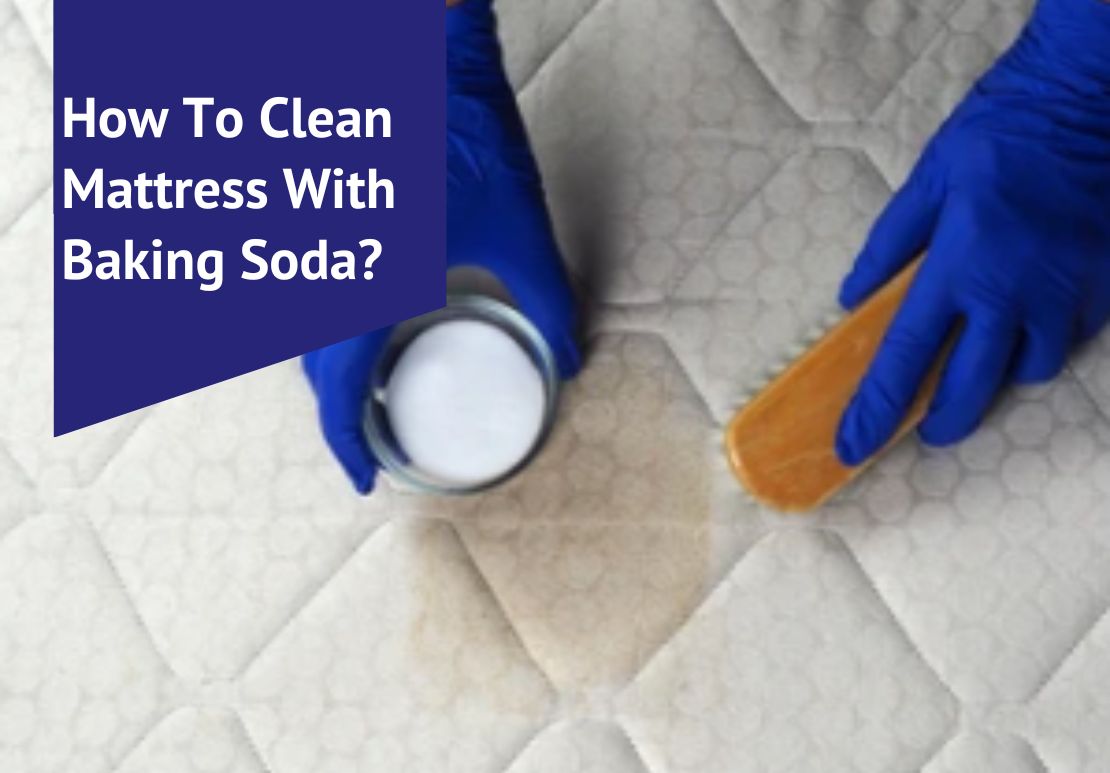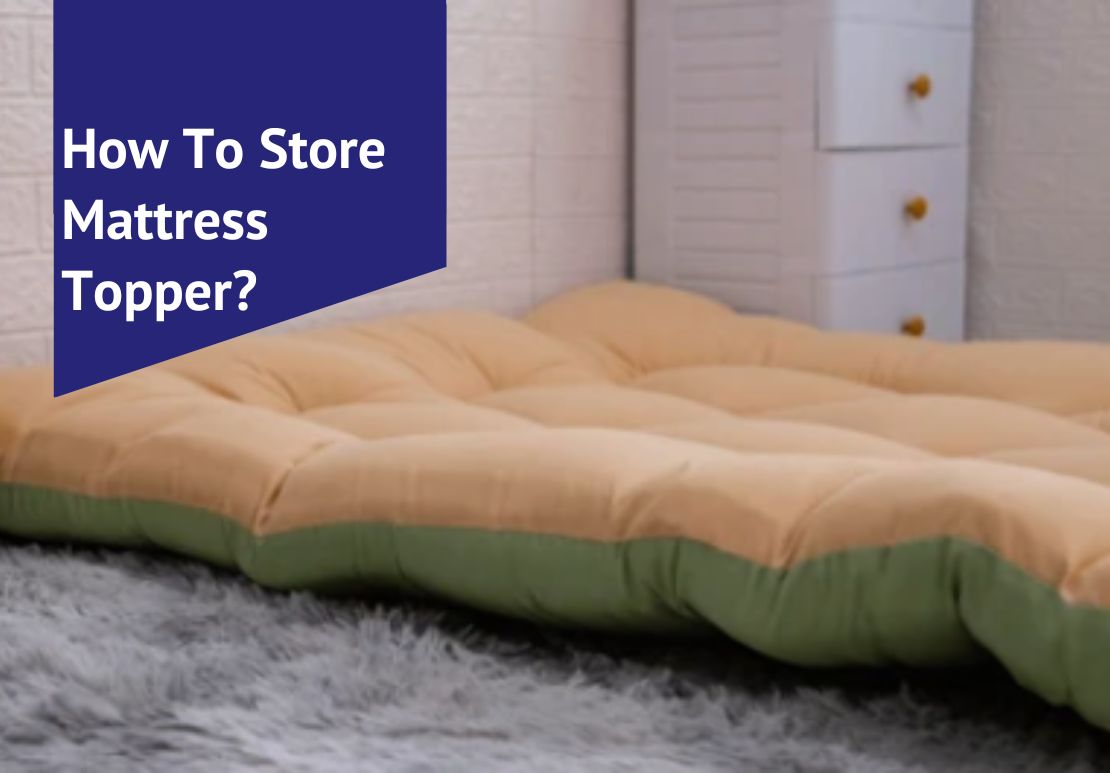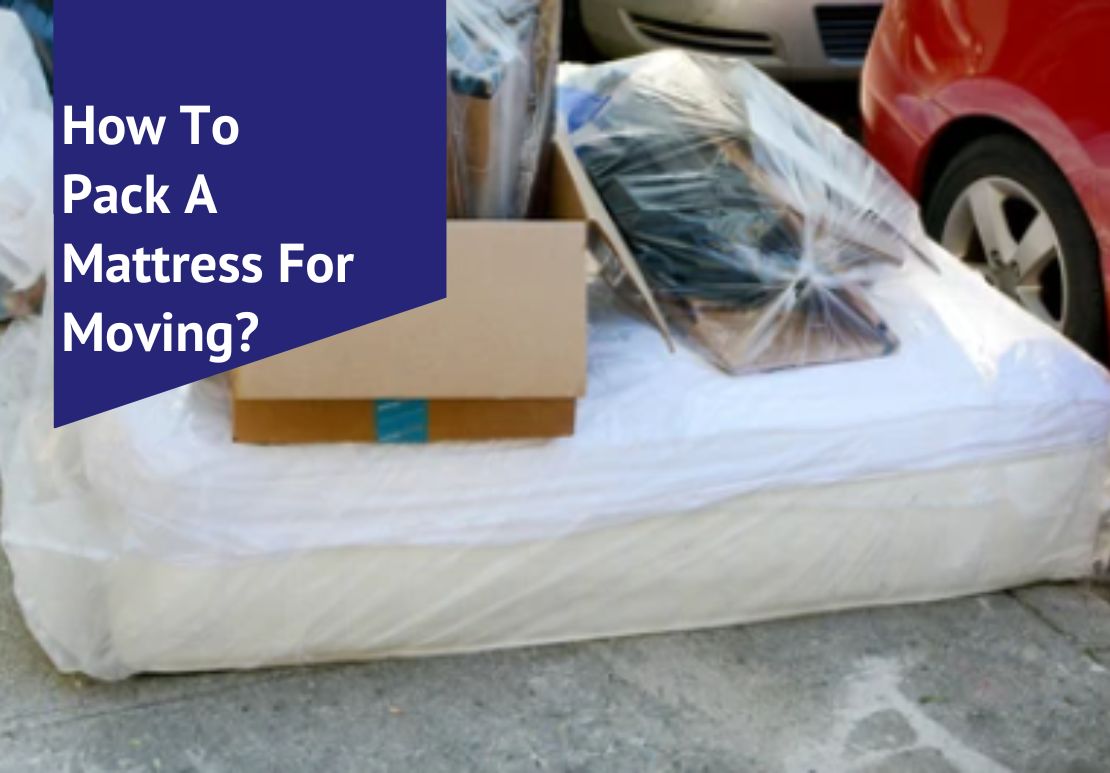Over time, your cozy mattress pad can accumulate dust mites, sweat stains, and other allergens that disrupt a good night’s sleep. Therefore, it is important to wash your mattress pad regularly. Did you know experts recommend washing your mattress pad every two to three months for optimal cleanliness? Therefore, it is important to regularly wash and maintain your mattress pad.
This blog will serve as your go-to guide on how to properly clean a variety of different mattress pads ensuring prolonged use and hygienic sleep environment.
Stay tuned for practical tips and tricks that will revolutionize the way you care for this essential piece of bedding.
Table of Contents
Key Takeaways
- Washing your mattress pad every two to three months is recommended for optimal cleanliness and hygiene.
- Look out for signs such as yellow stains, bad smells, and worsening allergies, which indicate that your mattress pad needs cleaning.
- Different types of mattress pads can be washed, including cotton, polyester, microfiber, and quilted or padded ones. Just make sure to follow the care instructions provided by the manufacturer.
- When washing a mattress pad in the washer: pre-treat stains (if necessary), use cold water and a gentle cycle with mild detergent, rinse thoroughly to remove residue, and dry properly before reassembling your bed.
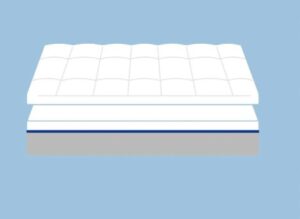
What is a Mattress Pad?
A mattress pad is a thin layer of padding that is placed on top of a mattress, such as a foam mattress to provide extra comfort and protection. It acts as a barrier between the sleeper and the mattress, helping to extend the life of the mattress while adding an extra layer of cushioning.
Purpose and benefits to clean a mattress
A mattress pad is a great tool for your bed. It helps keep your mattress look new. It can add comfort to your sleep too. Some pads even hold heat in the winter and cool air in summer.
By catching sweat, oils, and spills, it keeps these things from reaching the mattress. If you have allergies, this is good news! A clean pad helps take out allergens that may give you a rough time at night.
Remember to wash it every one to two months for best results.
How Often Should You Wash a Mattress Protector or Mattress Pad?
Knowing how often to wash your mattress pad is essential for maintaining its cleanliness and prolonging its lifespan. Find out the signs that indicate it needs cleaning and the recommended frequency to ensure a fresh and comfortable sleeping surface.
Signs that it needs cleaning
Look at your mattress pad. Does it have yellow stains? These could be from sweat, body oils, or spills. Each shows that a cleaning is needed. A bad smell also means you need to clean it.
If you have allergies and find them getting worse, this can mean dust mites are in your mattress pad. So, washing the mattress protector often is key for those who suffer from allergies too.
Watch out for these signs so you can keep your sleep spot clean and safe.
Recommended cleaning frequency
Experts say you should wash a mattress pad every two to three months. This keeps your sleep area clean and healthy. If there are yellow stains from sweat, oils, or spills, wash it more often.
Some people even suggest washing the cover once a month to protect your mattress better. However, this can change if you have allergies. It’s better to wash your mattress pad more often in that case so allergens go away.
Can You Wash a Mattress Pad?
Yes, you can wash a mattress pad to keep it clean and fresh. Find out the types of mattress pads that can be washed and the recommended washing methods.
Types of mattress pads that can be washed
Different types of mattress pads can be washed to keep them clean and fresh. These include:
- Cotton mattress pads: Cotton mattress pads are usually machine washable. It is recommended to use cold water and a gentle cycle when washing them.
- Polyester mattress pads: Polyester mattress pads can also be machine-washed. Use a mild detergent and choose a gentle cycle to prevent damage to the fabric.
- Microfiber mattress pads: Microfiber mattress pads can be washed in the washing machine as well. Use cold water and a gentle cycle for best results.
- Quilted or padded mattress pads: Quilted or padded mattress pads may need extra care when washing. Check the care instructions before washing, as some may require hand washing or spot cleaning only.
Recommended washing methods
To keep your mattress pad or mattress topper clean and fresh, here are the recommended washing methods:
- Check the care instructions: Before washing your mattress pad, always check the care label or manufacturer’s instructions for specific guidelines.
- Pre-treat stains: If you have any stains on your mattress pad, pre-treat them before washing. You can use a stain remover or create a paste with baking soda and water to remove stubborn stains.
- Wash in cold water: It is generally recommended to wash a mattress pad in cold water to prevent shrinking or damage. Cold water helps to preserve the integrity of the fabric.
- Use a mild detergent: Choose a mild detergent that is suitable for delicate fabrics. Avoid using bleach or harsh chemicals as they can cause damage to the mattress pad.
- Gentle cycle: Set your washing machine to a gentle or delicate cycle when washing your mattress pad. This will help protect the fabric and maintain its quality.
- Dry on low heat: When drying your mattress pad, use a low heat setting or air-dry it if possible. High heat can shrink or damage the fabric. Make sure it is completely dry before putting it back on your bed.
How to wash a mattress pad/topper in the washer?
To wash a mattress pad in the washer, follow these simple steps for a clean and fresh bed.
Step-by-step instructions
To wash a mattress pad, follow these simple steps:
- Prepare the mattress pad: Remove the mattress pad from the bed and check for any visible stains.
- Check the care label: Read the manufacturer’s instructions on how to wash the mattress pad. This will provide important information about the recommended washing temperature and detergent.
- Pre-treat stains (if necessary): If there are any stains on the mattress pad, pre-treat them before washing. Apply a small amount of stain remover or mild detergent directly to the stained area and gently rub it in using a clean cloth or sponge.
- Load into the washing machine: Place the mattress pad into your washing machine. Make sure it is evenly distributed to avoid uneven cleaning or damage to the machine.
- Choose appropriate settings: Set your washing machine to a gentle cycle with cold water. Using cold water helps prevent shrinkage and color fading.
- Add detergent: Measure out an appropriate amount of mild detergent for a regular-sized load, following the instructions on the detergent packaging.
- Start the wash cycle: Begin the wash cycle and let the machine do its work.
- Rinse thoroughly: Once the initial wash cycle is complete, run an additional rinse cycle to ensure all detergent residue is removed from the mattress pad.
- Dry properly: After rinsing, remove the mattress pad from the washing machine and squeeze out any excess water without wringing it too tightly as this can damage its shape. It is best to air dry by hanging it over a clothesline or laying it flat on a clean surface away from direct sunlight or heat sources.
- Reassemble: Once completely dry, reassemble your bed by placing fresh sheets and pillowcases over your clean and dry mattress pad.
What you will need to clean your mattress
To wash a mattress pad, you will need the following items:
- Mild detergent: Choose a gentle detergent that is suitable for delicate fabrics to avoid damaging the mattress pad.
- Stain remover: Have a stain remover on hand to help tackle any stubborn stains on the mattress pad.
- Baking soda: Baking soda can be used to remove odors from the mattress pad and freshen it up.
- Vacuum cleaner: A vacuum cleaner with an upholstery attachment can be used to remove any dust or debris from the mattress pad before washing.
- Washing machine: Use a washing machine that has a large enough capacity to accommodate the size of your mattress pad.
- Cold water: Wash the mattress pad in cold water to prevent shrinking or damaging the fabric.
- Dryer or clothesline: You will need a way to dry the mattress pad after washing it. You can either use a dryer on a low heat setting or hang it outside on a clothesline to air dry.
Preparing for washing
Preparing your mattress pad for washing is an important step to ensure effective cleaning. Here’s what you need to do:
- Check the care instructions: Before washing your mattress pad, read the manufacturer’s care instructions carefully. This will guide you on the recommended washing method and any special precautions.
- Remove from the bed: Take off the mattress pad from your bed and remove any sheets or other bedding that may be attached to it.
- Shake off loose debris: Give the mattress pad a good shake to remove any loose dirt, dust, or crumbs that may have accumulated on its surface.
- Inspect for stains: Look closely at the mattress pad for any visible stains. Make a mental note of their location so that you can treat them later during the cleaning process.
- Pre-treat stubborn stains: If you notice any tough stains, pre-treat them before washing. Follow the stain removal methods mentioned in our previous section to tackle specific types of stains effectively.
- Check for tears or damage: Examine the mattress pad for any rips, tears, or other signs of damage. It’s best to repair these before washing to prevent further damage during cleaning.
- Close all zippers and fasteners: If your mattress pad has zippers or fasteners, make sure they are securely closed before washing. This will prevent them from snagging or catching on other items in the washing machine.
- Separate according to size: If you have multiple mattress pads to wash, sort them according to their size or type (e.g., twin, queen). This will help ensure proper load distribution in the washing machine.
- Gather required supplies: Get everything ready before starting – mild detergent suitable for delicate fabrics, a clean washcloth for spot cleaning, and a laundry bag if necessary.
- Set aside time for drying: Keep in mind that drying a mattress pad may take longer than regular laundry items. Plan accordingly and allow sufficient time for air drying or using a low heat setting in the dryer.
How to Treat Stains on a Mattress Pad
To treat stains on a mattress pad, start by identifying the type of stain and choosing the appropriate cleaning method. For example, for liquid stains like urine or sweat, blot the area with a mixture of mild detergent and water.
For food or drink stains, use a solution of vinegar and water to gently scrub the affected area. Repeat these steps as necessary until the stain is removed completely before proceeding with washing the entire mattress pad.
Different stain removal methods to wash mattresses effectively
Stains on a mattress pad can be bothersome, but there are different stain removal methods to help you keep it clean and fresh. Here are some effective ways to remove stains from your mattress pad:
- For sweat or body oil stains, mix equal parts of liquid dish soap and hydrogen peroxide. Apply the mixture directly to the stain, let it sit for 10-15 minutes, then blot with a clean cloth.
- For urine stains, mix one tablespoon of baking soda with one cup of cold water. Blot the stain gently with the solution using a clean cloth until the stain is removed.
- For blood stains, make a paste by mixing two tablespoons of cornstarch with cold water. Apply the paste to the stain and let it sit for 30 minutes before rinsing with cold water.
- For food or beverage stains, use a mild detergent mixed with cold water. Gently scrub the stained area with a soft brush or sponge until the stain is gone.
Tips for Cleaning Different Types of Mattress Pads
To clean different types of mattress pads, such as latex, memory foam, egg crate, wool, feather, and bamboo, it is important to follow specific care instructions for each type.
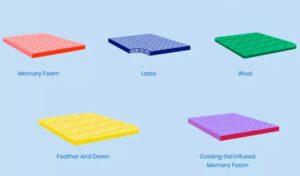
Latex, memory foam, egg crate, wool, feather, and bamboo
Different types of mattress pads require different cleaning methods. Here are some tips for cleaning different types of mattress pads:
- Latex: Spot clean spills and stains with mild detergent and water. Avoid soaking or submerging the latex pad in water.
- Memory Foam: Vacuum the memory foam pad regularly to remove dust and debris. Spot clean stains with a mixture of mild detergent and water.
- Egg Crate: Machine wash the egg crate pad on a gentle cycle using cold water and mild detergent. Air dry or use low heat in the dryer.
- Wool: Spot clean small stains with mild detergent and water. Dry clean larger stains or the entire wool pad if needed.
- Feather: Spot clean small stains using a mixture of mild detergent and water. Dry clean larger stains or the entire feather pad if necessary.
- Bamboo: Machine wash the bamboo pad on a gentle cycle using cold water and mild detergent. Tumble dry on low heat or air dry.
Taking Care of Your Mattress Pad in Between Washes
To keep your mattress pad in great condition between washes, regular spot cleaning and maintenance are key. This includes promptly treating any stains that may occur and regularly vacuuming or airing out the pad to prevent dust buildup.
Spot cleaning
To keep your mattress pad clean and fresh between washes, spot cleaning is a handy method. Here are some simple steps to follow:
- Identify the stain: Determine the type of stain on your mattress pad, such as spills, urine, or sweat.
- Act quickly: The sooner you address the stain, the easier it will be to remove it.
- Blot don’t rub: Use a clean cloth or paper towel to blot the stain gently. Avoid rubbing, as it can spread the stain and push it deeper into the fabric.
- Use mild detergent: Mix a small amount of mild detergent with water according to package instructions.
- Dab and rinse: Dip a clean cloth into the detergent mixture and gently dab at the stained area. Rinse the cloth with clean water and continue dabbing until the stain fades.
- Pat dry: After removing the stain, pat dry with a clean cloth or paper towels to absorb excess moisture.
- Air dry: Allow your mattress pad to air dry completely before placing it back on your bed.
- It is important to check the manufacturer’s instructions for washing a mattress cover to ensure proper care.
- If you have allergies, it is especially important to regularly wash your mattress pad to remove allergens
Regular maintenance
To keep your mattress pad in good condition, it’s important to provide regular maintenance. Here are some tips:
- Vacuum your mattress pad regularly using the upholstery attachment to remove any dust or debris.
- Rotate your mattress pad every few months to ensure even wear and tear.
- Air out your mattress pad by removing it from the bed and placing it outside on a sunny day.
- Use a mattress protector on top of your mattress pad to protect it from spills and stains.
- Spot clean any stains or spills immediately using a mild detergent and a cloth.
- Avoid exposing your mattress pad to direct sunlight for extended periods, as this can cause fading.
- Follow the manufacturer’s instructions for washing and drying your mattress pad to prevent damage.
Avoiding common mistakes
To ensure proper care of your mattress pad and avoid any unnecessary damage, here are some common mistakes to avoid:
- Using hot water: Avoid washing your mattress pad in hot water, as this can cause shrinkage or damage to the fabric. Stick to cold or warm water for best results.
- Using harsh detergents: Avoid using strong detergents or bleach when washing your mattress pad. Instead, opt for a mild detergent that is gentle on fabrics and won’t leave behind any residue.
- Overloading the washer: It’s important not to overload your washing machine when cleaning your mattress pad. This can prevent it from getting cleaned properly and may also put strain on your machine.
- Skipping pre-treatment: If you have any stains on your mattress pad, make sure to pre-treat them before washing. This can help remove the stains more effectively and prevent them from setting in.
- Not checking care instructions: Different types of mattress pads may have specific care instructions that you need to follow. Always check the manufacturer’s guidelines before washing to ensure you’re using the correct method.
- Using excessive heat: When drying your mattress pad, avoid using high heat settings in the dryer. High heat can damage the fabric and cause shrinkage. Opt for low or medium heat instead.
- Ignoring maintenance between washes: In addition to regular washing, it’s important to maintain your mattress pad between washes. This includes spot-cleaning any spills or stains as soon as they happen and regularly vacuuming to remove dust and debris.
When to Replace Your Mattress Pad
If you notice that your mattress pad is no longer providing the desired comfort and support, or if it has become worn out, flattened, or lumpy, it may be time to replace it.
Signs that it needs to be replaced
If you notice that your mattress pad is becoming lumpy or saggy, it may be a sign that it needs to be replaced. Another indication is if you can feel the springs or coils through the padding.
Stains and odors that are difficult to remove could also mean that it’s time for a new mattress pad. Additionally, if you’ve had your mattress pad for more than five years, it might be less effective at providing comfort and support.
Remember, replacing your mattress pad when these signs appear will help ensure a better night’s sleep and keep your bed clean and hygienic.
Tips for choosing a new one
When choosing a new mattress pad, there are some important factors to consider. Here are some tips that can help homeowners make the right choice:
- Thickness: Look for a mattress pad with adequate thickness to provide comfort and cushioning.
- Material: Consider the different materials available, such as cotton, polyester, or memory foam, and choose one that suits your preferences and needs.
- Breathability: Opt for a mattress pad that allows air circulation to prevent sweating and overheating during sleep.
- Waterproofing: If you have young children or pets, consider a mattress pad with waterproofing features to protect against spills and accidents.
- Allergen protection: If you suffer from allergies or asthma, look for a hypoallergenic mattress pad that is resistant to dust mites and other allergens.
- Easy maintenance: Choose a mattress pad that is easy to clean and care for, preferably one that is machine washable.
- Size: Make sure to measure your mattress correctly before purchasing a new mattress pad to ensure a proper fit.
- Price: Set a budget and compare prices of different options to find a quality mattress pad that fits your budget.
Conclusion
Cleaning your mattress pad regularly is essential for maintaining a clean and healthy sleep environment. By following the recommended washing instructions and frequency, you can ensure that your mattress pad stays fresh and free from stains.
Remember to treat any stains promptly using the appropriate stain removal methods. With proper care and maintenance, your mattress pad will continue to provide you with comfort and protection for years to come.
Frequently Asked Questions
Can I machine wash a mattress pad?
Yes, most mattress pads can be machine-washed. However, it's important to check the care instructions on the label to ensure you are following the correct washing method.
How often should I wash my mattress pad?
It is recommended to wash your mattress pad every few months or as needed. This helps maintain its cleanliness and extend its lifespan.
Can I use bleach on my mattress pad?
No, it is not recommended to use bleach on a mattress pad as it can damage the fabric and cause discoloration. Instead, opt for gentle laundry detergents that are suitable for delicate fabrics.
Can I put my mattress pad in the dryer?
Yes, most mattress pads can be dried in a tumble dryer on low heat settings. Again, make sure to refer to the care instructions provided by the manufacturer.
What if my mattress pad has stains?
If your mattress pad has stains, try using a stain remover specifically designed for removing stains from fabrics before washing it according to the care instructions provided with your specific product.

